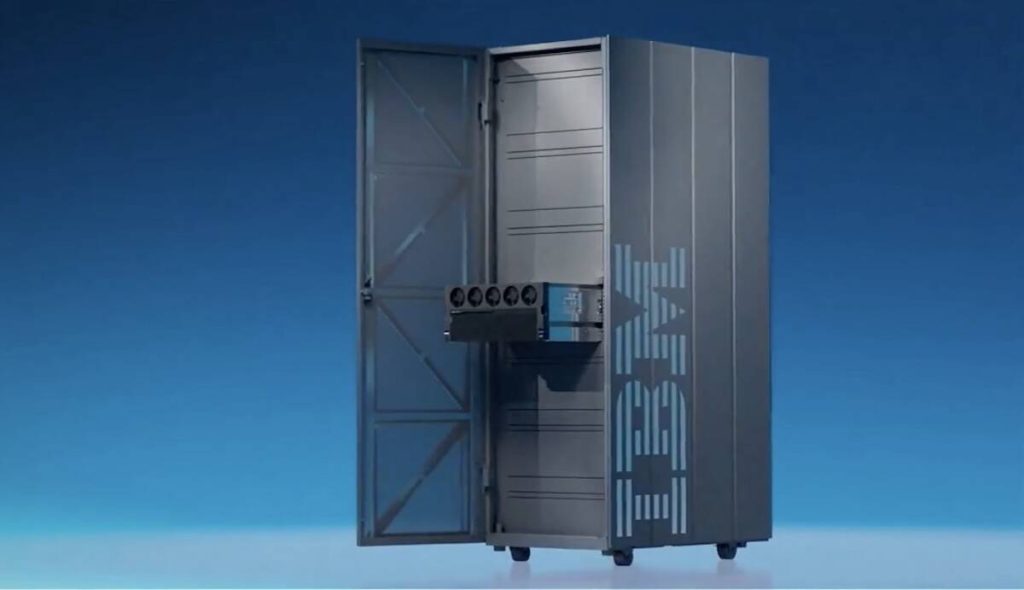In case you’d forgotten, IBM is still blazing its own trail with regard to silicon. And in terms of speeds and feeds, Big Blue’s latest crop of Power chips boasts up to 55 percent faster cores than its Power9 chips.
As impressive as that Power11 stat might sound, remember that Power9 made its debut in 2017. That, you may recall, was the generation of CPUs that powered the Department of Energy’s Summit and Sierra supercomputers.
However, these chips aren’t necessarily aimed at supercomputers, and this is reflected in core count across the lineup. While AMD and Intel are pushing core counts to 192 or more, IBM’s Power11 tops out at 30 cores per socket. From what we gather, this is achieved using two 15-core dies that share a package, as was the case with Power10.
Having said that, you might be fooled into believing it has a lot more cores if you were to run htop on one of these systems. That’s because much like past Power processors, each chip supports up to 8-way simultaneous multithreading. That means that the 30-core socket could have as many as 240 threads. Intel and AMD’s chips, meanwhile, offer at most two threads per core.
While Power11 doesn’t appear to offer any more cores per socket than Power10, Big Blue says those cores are substantially more efficient. With the new chips, IBM is introducing the concept of resource groups, a firmware feature that aims to maximize utilization and increase performance without driving up energy consumption. The chips also feature an energy-saving mode that trades a little bit of performance for a 28 percent improvement in efficiency.
Taken together, IBM’s Power11 claims twice the performance per watt of comparable x86 systems.
Alongside this generation’s improved power efficiency, IBM continues to tout the Power lineup’s resiliency. If its claims are to be believed, its latest crop of Power systems will deliver 99.9999 percent uptime and require zero-downtime for system maintenance.
Some of this resiliency is achieved through architectural decisions made in silicon. For example, while a Power11 system might be equipped with a 16-core chip, not all of those cores are necessarily accessible to the user. In the case of IBM’s E1180 node, four cores — one per socket — are held as reserve as a sort of hot-spare on the off chance one of the active cores acts up.
For more common operations, the system is designed to be serviced or upgraded while in operation. The systems feature hot-pluggable fans, power supplies, and I/O components, which can be swapped out during operation.
Of course this being 2025, we can’t talk about new silicon without touching on AI, and it seems neither can IBM. While details are still rather thin, the company’s Power11 processors feature on-chip AI accelerators capable of running large and small language models. We’ve asked IBM for a bit more detail on these integrated accelerators, but if we had to guess, they’re probably similar to the ones baked into its z17 CPUs used in its mainframe products.
IBM also plans to offer systems equipped with its Spyre AI inference accelerator beginning later this year. Announced last year, the 75-watt add-in card boasts 128GB of LPDDR5 memory, good for 200GB/s of bandwidth, along with 300 TOPS of what we assume is FP16 performance. That puts it in a similar power and performance class as Nvidia’s L4, albeit with more than 5x the memory capacity.
System rundown
IBM’s Power11 will be offered in at least six SKUs at launch. Here’s a quick rundown of each:
At the top of the stack is IBM’s E1180, and stack is definitely the right word for these systems. The machine can be had in either a single-node or four-node cluster config.
Each node features four Power11 sockets, each with 10, 12, or 16 cores, for a max of 64 cores and 512 threads per system. Though again, from what we understand, four of those cores are going to be on backup duty. Connected to all that compute are 64 DDIMM slots that when fully populated top out at 16TB of DDR5 capacity.
Moving further down the stack is IBM’s E1150. On the surface, the system shares a lot in common with its larger sibling. Both the E1180 and E1150 feature 64 DDIMM memory slots with support for 16TB of DDR5, and four Power11 sockets. The primary difference lies in how those sockets are configured. Rather than maxing out at 16 cores per socket, the E1150 can be had with 16, 24, or 30 core modules for a max of 120 cores per system.
Alongside its four socket systems, Power11 is also available in four dual-socket configurations. The S1124 is a 4U rack system that can be had with up to 8TB of memory, between 32 and 60 Power11 cores, and is equipped with 24 U.2 drive bays.
The smaller 2U S1122, meanwhile, starts at eight cores but can be configured with up to 60. Those cores are fed by up to 4TB of memory and 24 U.2 drives —though we only count 16 on the front of the system.
It appears IBM will also offer cost-reduced versions of its two socket systems with the L1122 and L1124. These systems will be limited to running Linux, which isn’t necessarily a major loss if you weren’t planning to use IBM’s particular flavor of Unix called AIX.
Power11-based systems will be available starting July 25, both on-prem and in IBM Cloud. ®

